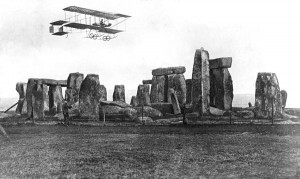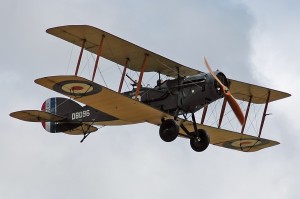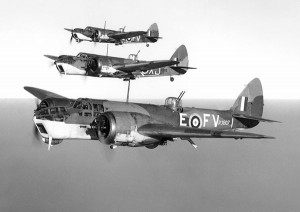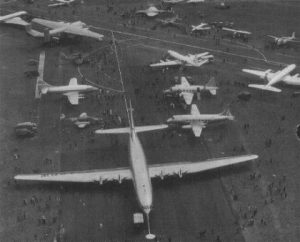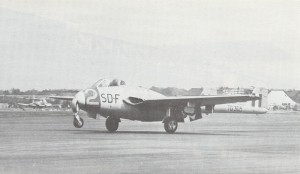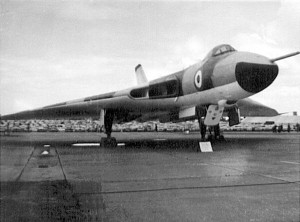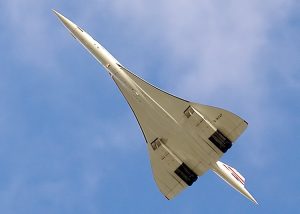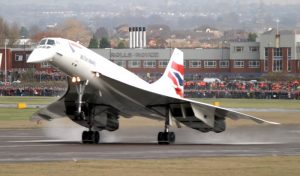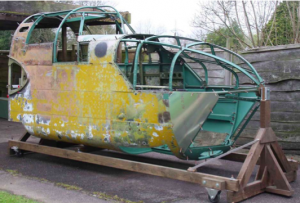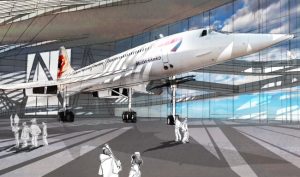
from the Bristol Boxkite to Concorde.
(Image Credit: Bristol Aerospace Centre)
With an aviation history that stretches back over 100 years and only ended six months ago, The Filton Aeordrome, located just a couple of miles north of Bristol, UK, is planned to be the site of an impressive new museum, the Bristol Aerospace Centre, that will showcase the role this center of aircraft manufacture (and RAF Airbase) played in the history of aviation, dating back to 1910, when Sir George White, the owner of Bristol Tramways, established the British and Colonial Aeroplane Company, later known as Bristol Aeroplane Company in one of the maintenance sheds of Bristol Tramways.
(Image Credit: RAF Museum)
The first commercially successful aircraft designed and manufactured at the site was the Bristol Boxkite in 1910, and during World War One, over 5,300 Bristol F.2 Fighter planes were produced at Bristol’s expanding facilities at Filton while the company added production of their aircraft to another site owned by Bristol Tramways within the city of Bristol proper. The forerunner of the Royal Air Force, the Royal Flying Corps officially established Filton Aerodrome and built a airbase on its grounds in 1915.
(Image Credit: Creative Commons GNU 1.2)
In 1929 the RAF No 501 (City of Bristol) Squadron was formed, based at RAF Filton, flying Airco DH.9As, which were later replaced with Westland Wapitis and later still with Westland Wallaces. The squadron was equipped with Hawker Hurricanes by 1939 and formed part of the British forces sent to France. During World War Two, following a Heavy bombardment of the Bristol Aeroplane Company by the Luftwaffe in 1940, a squadron of Supermarine Spitfires were stationed at Filton to defend the critical infrastructure from further attack.
During the war, Bristol produced large numbers of their Blenheim, Beaufort, Beaufighter and Brigand aircraft at Filton as well as assembling tremendous numbers of US Aircraft that were sent via ship across the Atlantic. The Air Base also was became a major port-of-entry for US casualties after the D-Day landings in June 1944, with most of the casualties taken to Frenchay Hospital located nearby. In 1948, 501 Squadron was equipped with de Havilland Vampires which became a common sight in the skies around Filton until the unit was disbanded in 1957.
Farnborough Air Show, four days after its first flight in September of 1949
The Aerodrome meanwhile was expanded to accommodate the development of the mammoth Bristol Brabazon airliner prototype, which while never advancing beyond the production of a single flying prototype, it presaged the development of many technologies that would become the norm in the future, such as 100% powered flying controls, electric engine controls, and high-pressure hydraulics. With a wingspan 35 feet greater than a 747 at 230 feet and a 230 foot fuselage, this monster aircraft was powered by eight Bristol Centaurus 18-cylinder radial engines, each driving a pair of contra-rotating propellers. All of this for an intended passenger load of 100 people, who would luxuriate in space unheard of then (or especially now), with kitchens, bars, dining areas, a promenade and even a movie theatre providing a cruise ship experience while in the sky. The failure of the Brabazon to find takers seems obvious in hindsight, but up until that point that was how the wealthy had always travelled, and to some extent were travelling on Pan Am’s Boeing 314 Clippers and other large flying boats of the day, such as the Short Brothers Flying boats operated by other airlines.
While the Brabazon was a failure, Bristol had sucess with a number of it’s other models produced at Filton, like the Bristol Britannia, Type 170 Freighter and Superfreighter. The upside to the failed development of the Brabazon was the erection of what was then the world’s largest aircraft hangar, which was utilized by the British Overseas Airways Corporation (BOAC) who flew their Lockheed Constellations and Boeing Stratocruisers into Filton to be serviced within the massive indoor space.
Over the years the airfield became a hub of military and civil aviation, both for operation and design and manufacturing. The site was home to several RAF flight training programs and boasted an aviation college. In the 1950s and early ’60s, Filton was designated as a V Bomber dispersal base and during the Cuban Missile Crisis, Avro Vulcan V bombers were stationed at Filton and kept at an ‘immediate readiness’ status with engines idling. BAC meanwhile branched out into the development and production of pre-fabricated buildings, plastics, helicopters, guided weapons, luxury cars, gas turbines and ramjet motors. A dizzying series of mergers, acquisitions, failures and yet more mergers and acquisitions found Filton dominated by the resultant British Aircraft Corporation, which took the designs of the Bristol Type 223 supersonic transport plane and joined forces with Sud Aviation of France to produce the plane that would come to be known as the Concorde.
The 1960s and 70s saw the development and production of Concorde at Filton as well as the production of English Electric Lightnings and British Aerospace 146s among other craft and componentry and it was the site that devised, tested and performed the refitting of the entire British Airways Concorde fleet over the years to keep the planes airworthy and up-to-date with technological advances. Ironically, Concorde mirrored the Bristol Brabazon fiasco of many years earlier, a too expensive and fuel hungry plane to shuttle 100 well-heeled passengers place to place, an answer to a question, as it turned out, not many were asking. It was only British Airways and Air France, government-owned airlines taking on government-sponsored aircraft that operated the planes, developed by a joint venture of their respective governments, and despite astronomical ticket prices, were extraordinary money-losers for all concerned.
(Image Credit: Bristol Aerospace Centre)
At the end of Concorde service, the Concorde that had been kept at Filton as a source of spare parts for the operating fleet, Concorde G-BBDG was shipped to the Brooklands Museum, located at another historically significant British aviation site. Fittingly, the final Concorde flight ever was that of Concorde G-BOAF, flying from London Heathrow Airport to Filton on November 26, 2003.
The RAF Base gone, Concorde service discontinued, and a down economy contracted operations at the airfield to a trickle and it ceased flight operations at the end of 2012, though development of some of its land into housing developments was already well-underway. Fittingly the last aircraft (re)assembeld at Filton was a Supermarine Spitfire. Site of several historically important structures, including two WWI-era aircraft hangars, a museum is in the planning stages. The Concorde at Filton group merged with the Bristol Aero Trust and plans are underway for a new £13 million Bristol Aerospace Centre to be built.
for the new museum
(Image Credit: Bristol Aerospace Centre)
Rolls-Royce, which still has facilities at the site and owns a portion of what was once the Bristol Aeroplane Company has donated £1 million to the project. Rolls Royce will also provide a number of iconic engines to go on display through the Rolls-Royce Heritage Trust, as well as technical assistance in the development of the exhibition. Among the engines already identified for the museum is the Olympus 593 which powered Concorde and will be displayed alongside G-BOAF. BAE Systems, successor entity of much of the British aircraft companies that made their home at Filton has pledged £2 Million and nine acres of land at the former airfield for the construction of the museum, Airbus is providing £1 Million and exhibit support, and the project is in the running for £4.5 million from Britain’s Heritage Lottery Fund.
(Image Credit: Bristol Aerospace Centre)
Filton continues to be a center for the aerospace industry, with Rolls-Royce, BAE Systems, Airbus and MBDA Missile Systems among others continue to operate there these days, though without the convenience of an active airfield in their backyards. With a well-funded plan at a site of extreme historical significance, already in possession of a rare landmark aircraft in addition to the aircraft and artifacts held by Bristol Aero collection, the Bristol Aerospace Centre looks to become a premiere aviation museum and a must-see for citizens and visitors alike. We certainly can’t wait to see it.








